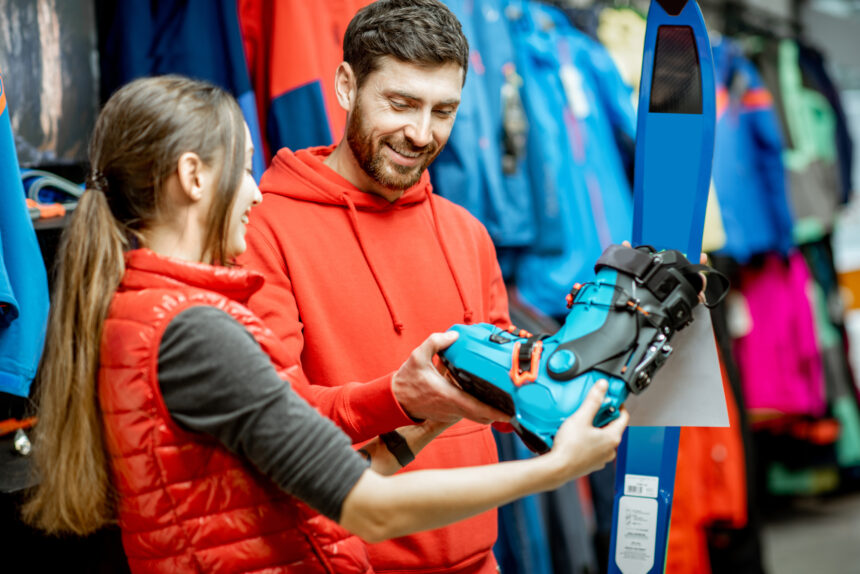Ski Equipment: What to Choose According to Your Level and On-Piste Conditions
Choosing the right ski equipment is crucial for both safety and enjoyment on the slopes. With a variety of options available, it can be overwhelming to determine what gear is best suited for your skill level and the specific on-piste conditions you may encounter. This article will guide you through the essential factors to consider when selecting ski equipment, ensuring you make informed decisions that enhance your skiing experience.
Understanding Your Skiing Level
Your skiing ability significantly influences the type of equipment you should choose. Skiers are generally categorized into three levels: beginner, intermediate, and advanced. Each level has specific needs that can affect performance and comfort.
- Beginner: Typically, beginners are just starting and may not have mastered basic techniques. They require equipment that is forgiving and easy to control.
- Intermediate: Intermediate skiers have a grasp of basic techniques and are looking to improve their skills. They need equipment that offers a balance of performance and stability.
- Advanced: Advanced skiers are proficient and often seek high-performance gear that can handle aggressive skiing and varied conditions.
Choosing the Right Skis
The type of skis you select should align with your skill level and the conditions you expect to encounter on the slopes. Here’s a breakdown of ski types based on ability:
- All-Mountain Skis: Suitable for all levels, these skis are versatile and can handle various conditions, making them ideal for skiers who enjoy exploring different terrains.
- Carving Skis: Best for intermediate to advanced skiers, these skis are designed for groomed runs and provide excellent edge control for making sharp turns.
- Freestyle Skis: Geared towards advanced skiers, these skis are lighter and shorter, allowing for tricks and jumps in terrain parks.
- Powder Skis: Ideal for advanced skiers who venture off-piste, these skis are wider to provide better floatation in deep snow.
Understanding Ski Length and Flex
The length and flex of your skis also play a critical role in performance. Generally, the right ski length is determined by your height, weight, and skiing style:
- Shorter Skis: Easier to maneuver, making them suitable for beginners and lighter skiers.
- Longer Skis: Provide stability at high speeds, preferred by advanced skiers.
Flex is another important factor. Softer flex skis are more forgiving and easier to control, making them ideal for beginners. In contrast, stiffer skis offer better performance for aggressive skiing but require more skill to handle.
Choosing Ski Boots
Ski boots are arguably the most important piece of equipment, as they connect you to your skis and affect your control and comfort. Here’s what to consider:
- Fit: A proper fit is essential. Boots should be snug but not painfully tight. Consider getting professionally fitted.
- Flex Index: Similar to skis, boots come with a flex index. Beginners should look for softer flex, while advanced skiers may prefer stiffer boots for better responsiveness.
Bindings: The Unsung Heroes
Bindings are crucial for safety and performance. They should be compatible with your skis and boots. Here are some tips:
- DIN Settings: Ensure your bindings are set to the appropriate DIN (Deutsches Institut für Normung) settings based on your weight, height, and skill level.
- Type of Bindings: Look for all-mountain bindings for versatility or specialized bindings for freestyle or backcountry skiing.
On-Piste Conditions: Adapting Your Gear
On-piste conditions can vary greatly, from icy hardpack to soft, slushy snow. Here’s how to adapt your equipment:
- Icy Conditions: Opt for narrower skis with a stiffer flex for better edge grip.
- Soft Snow: Wider skis will provide better floatation and stability.
- Variable Conditions: All-mountain skis are ideal for handling mixed conditions.
Conclusion
Choosing the right ski equipment is essential for maximizing your enjoyment and safety on the slopes. By understanding your skiing level, selecting appropriate skis, boots, and bindings, and adapting your gear to on-piste conditions, you can enhance your performance and confidence. Remember, investing in quality equipment tailored to your needs will not only improve your skiing experience but also help you progress more quickly. Whether you’re a beginner or an advanced skier, the right gear can make all the difference in your time on the mountain.
